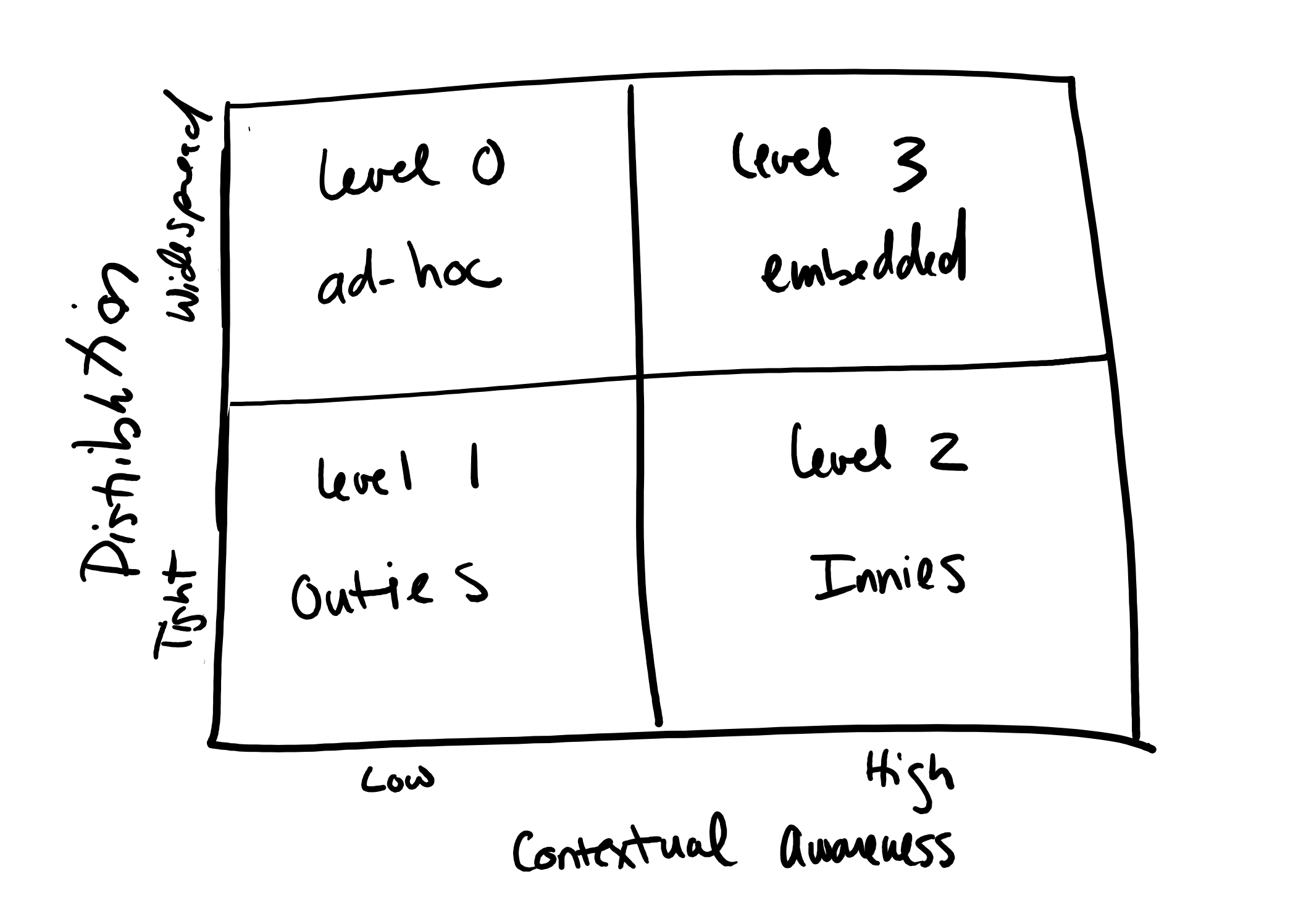IA maturity model
Level 0 - Ad-hoc Information Architecture: A company needs to do things and doesn’t realize IA is a specialty or doesn’t think they need it. This is common in small companies, simple business contexts, or organizations that fetishize generalists. Even if an experience doesn’t have an information architect working on it, it still has an information architecture. This ad-hoc architecture arises out of the decisions each individual or feature team makes. The nature of the product development process deincentivizes anyone from addressing systemic problems, even if they are noticed.
Level 1 - Outside Information Architecture: A company identifies an IA-related challenge and hires an outside consultant. They have a problem and are aware enough of the space that they know it has a term, “Information Architecture.” They hire somebody to come in and deal with a specific issue in a specific context. Depending on what it is, dealing with that issue could be a localized issue or it could reveal huge problems.
Level 2 - Inside Information Architecture: A company sees the value of IA enough to want to do it regularly or proactively, rather than in an ad-hoc way. They buy a very senior IA off the market, basically to avoid writing SOWs all the time. IAs work like internal consultants, deployed strategically and parsimoniously on the places where they’re likely to have the biggest impact. An unusually insightful company will realize that they need somebody to change things from within the weaving. The problem is, you can’t see a whole pattern and weave it at the same time.
Level 3 - Embedded Information Architecture: A company sees the impact of where they’re not deploying IA, and realizes that it needs to be an integrated skill in design, PM, and engineering. Because IA is the skillset that stops them from playing a game of telephone and preserves the structural integrity of meaning across contexts (Jorge Arango at the 2013 IA Summit.)

References
Klyn, Dan, and The Understanding Group (TUG). Abby Covert. 2, https://understandinggroup.com/architecting-information/architecting-information-1. Accessed 26 June 2023.
Rosenfeld, Louis, et al. Information Architecture: For the Web and Beyond. Fourth edition, O’Reilly Media, Inc, 2015.
Notes mentioning this note
In the same way that users are having an experience whether you’re there or not, the architecture of a site...